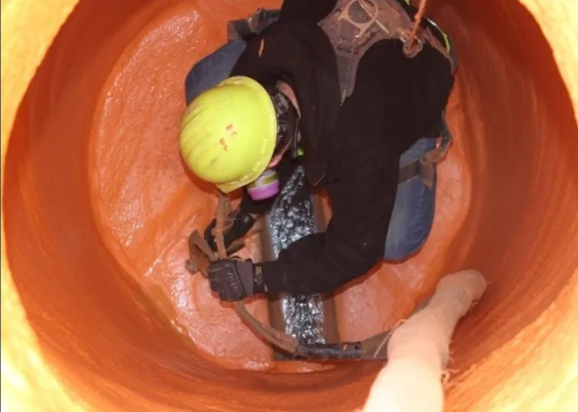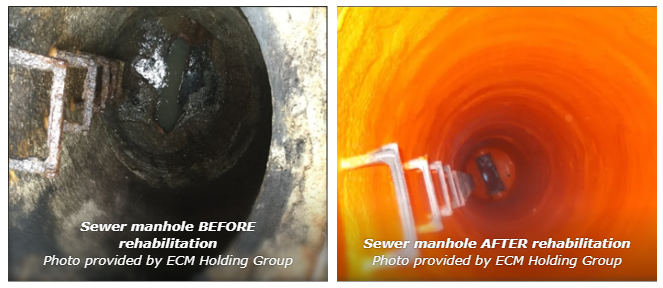Sealing the I&I Threat: How the City of Springtown Avoided Prematurely Paying Millions for Wastewater Treatment Expansion
Inflow and Infiltration (I&I) from leaking manholes is a serious and costly problem for wastewater treatment plants. Manholes can develop cracks or gaps over time, allowing rainwater and groundwater to seep into the sewer system. This infiltration dramatically increases during storms, overwhelming the wastewater infrastructure with large volumes of excess water that should not be treated. As a result, the plant’s capacity is strained, leading to higher treatment costs, potential overflows, and increased wear on equipment. In severe cases, the plant may reach regulatory capacity limits, forcing municipalities to prematurely invest in costly expansions.
DEPLOYING A SOLUTION
ECM Holding Group (ECM), a subsidiary of EMCOR Group, Inc., is a solutions-based provider for Energy Service Companies (ESCOs). They saw a rise in Environmental Protection Agency (EPA) consent decrees targeting utilities for inflow and infiltration issues and quickly acted to identify a solution they could provide ESCOs. They began to evaluate options to repair manhole leaks, looking at everything from cement liners to epoxy-based solutions, but found that nothing held up. After thorough testing, they landed on a polyurethane-based product manufactured by OBIC. The spray-applied, flexible lining systems are designed to meet the demands of municipalities and industrial wastewater systems, addressing concerns such as hydrogen sulfide corrosion and structural deterioration—extending the life of the manhole by 50 years. In 2021, they began offering the solutions to clients. The manhole lining technology was adopted by several ESCOs because they were already engaged in wastewater treatment projects, and this technology coupled well with smart meter projects that had budgeted for infrastructure upgrades. ECM has seen success utilizing demo sites to allow municipalities to experience the installation process and see the product.
Shawn Hunsberger, Vice President of Business Development of ECM, explains how the innovative manhole lining solution can be part of a more comprehensive infrastructure project for smaller municipalities; “We can combine manhole lining with other infrastructure solutions, such as cure-in-place piping (CIPP) to line sewer pipes. At treatment plants, we can also help reduce chlorine costs with on-site sodium hypochlorite generators, which reduce the need for store-bought chlorine. For smaller cities, ESCOs sometimes hesitate to take on projects because of their size, but we’ve seen success in adding manhole lining projects to enhance overall infrastructure upgrades.”
SPRINGTOWN, TX
Springtown, TX—a rural community of 4,700 residents just outside Fort Worth—was facing a looming $5-6 million expense to prematurely expand its wastewater treatment plant, as I&I issues were pushing the facility to its capacity limits. However, in 2023, the city took a proactive approach by selecting Ameresco through the TIPS Co-op, utilizing Texas Local Code 302, to rehabilitate their manholes as part of a comprehensive Energy Savings Performance Contract (ESPC). The project didn’t just stop at I&I repairs—it also included an Advanced Metering Infrastructure (AMI) system, meter replacements, and copper and lead surveying to meet stringent EPA requirements.


